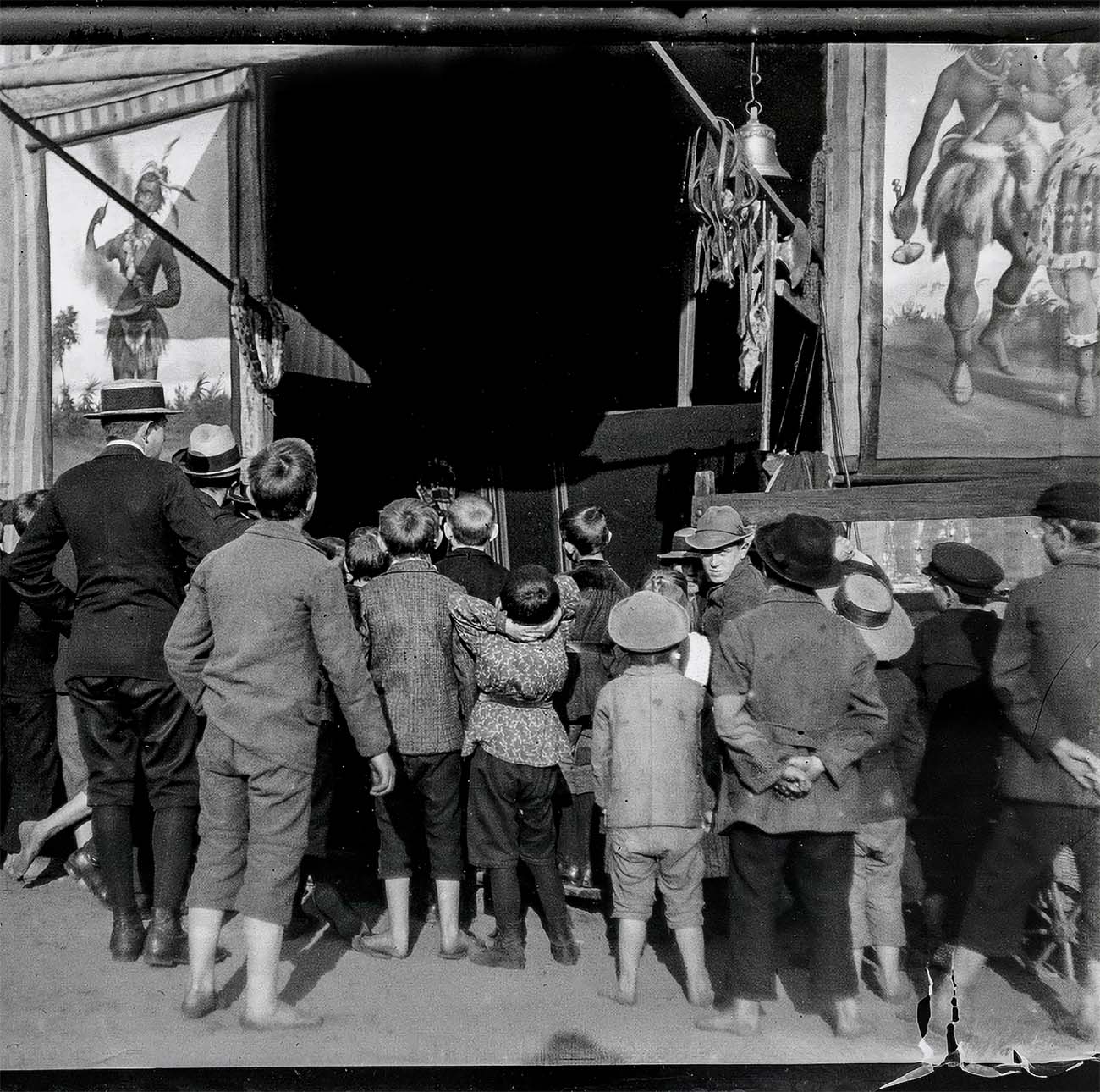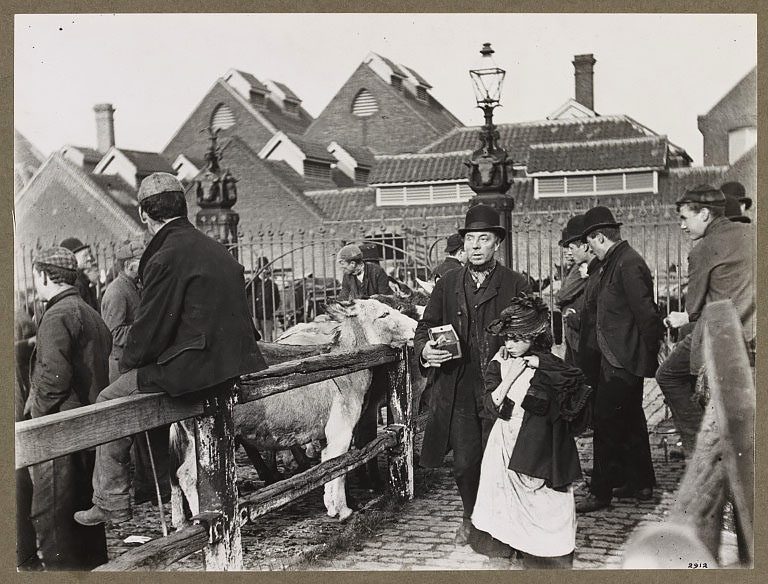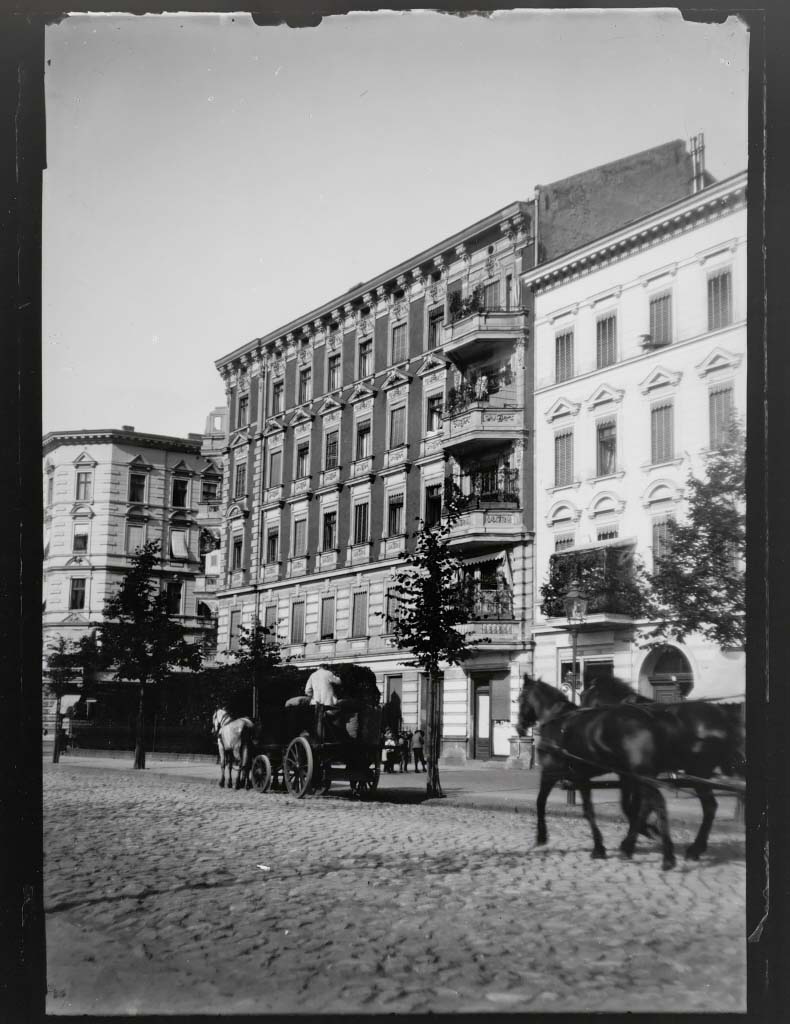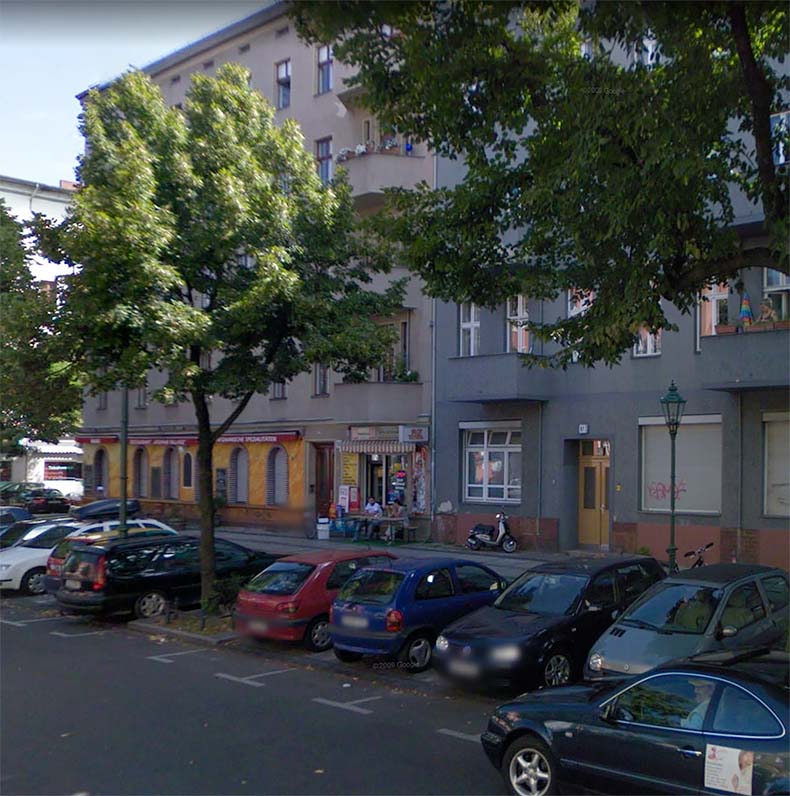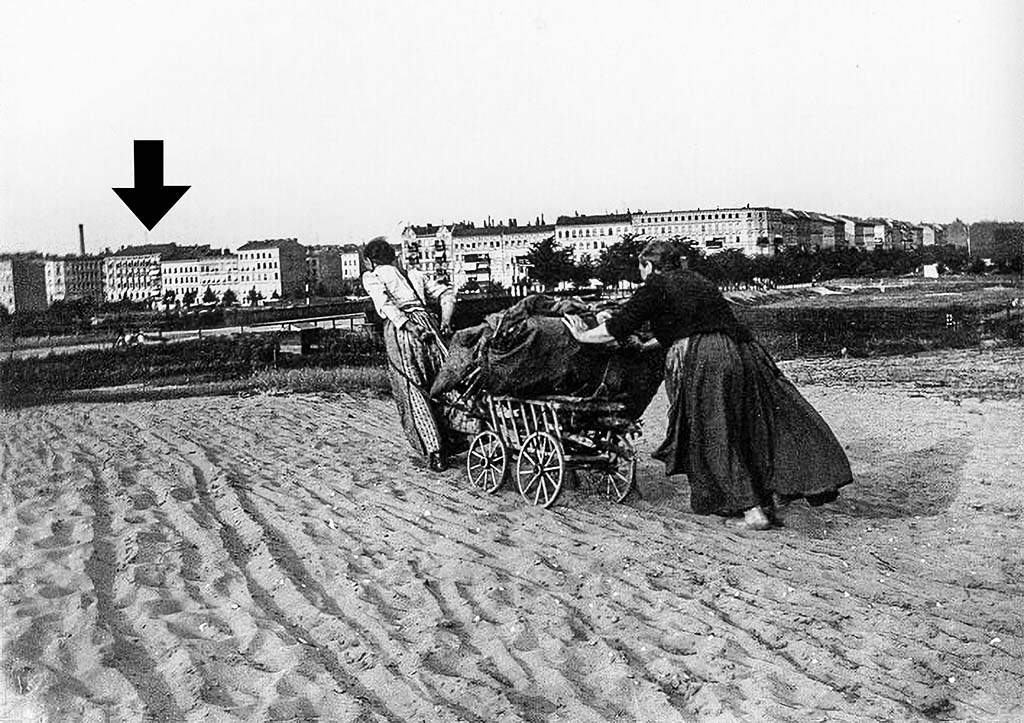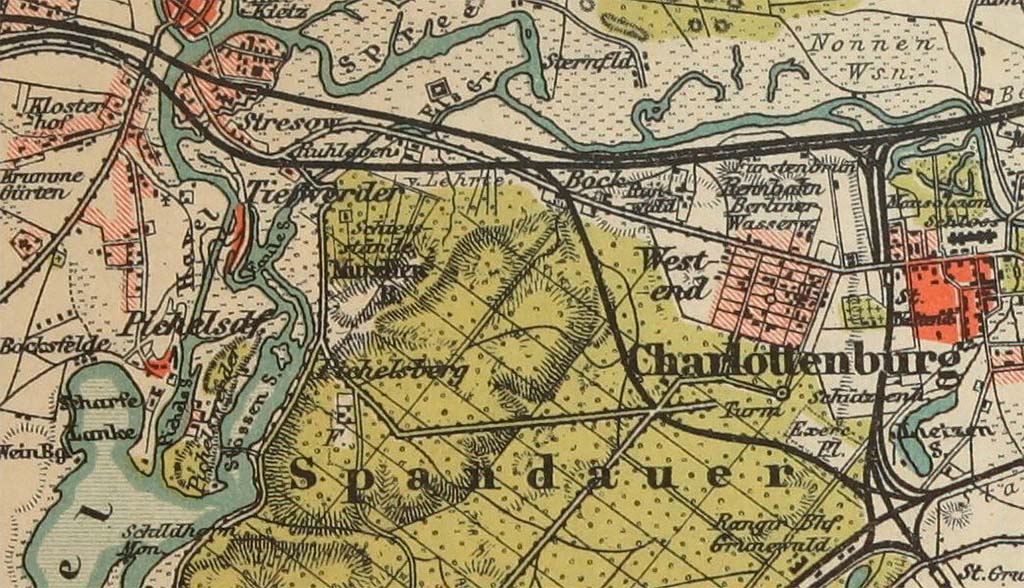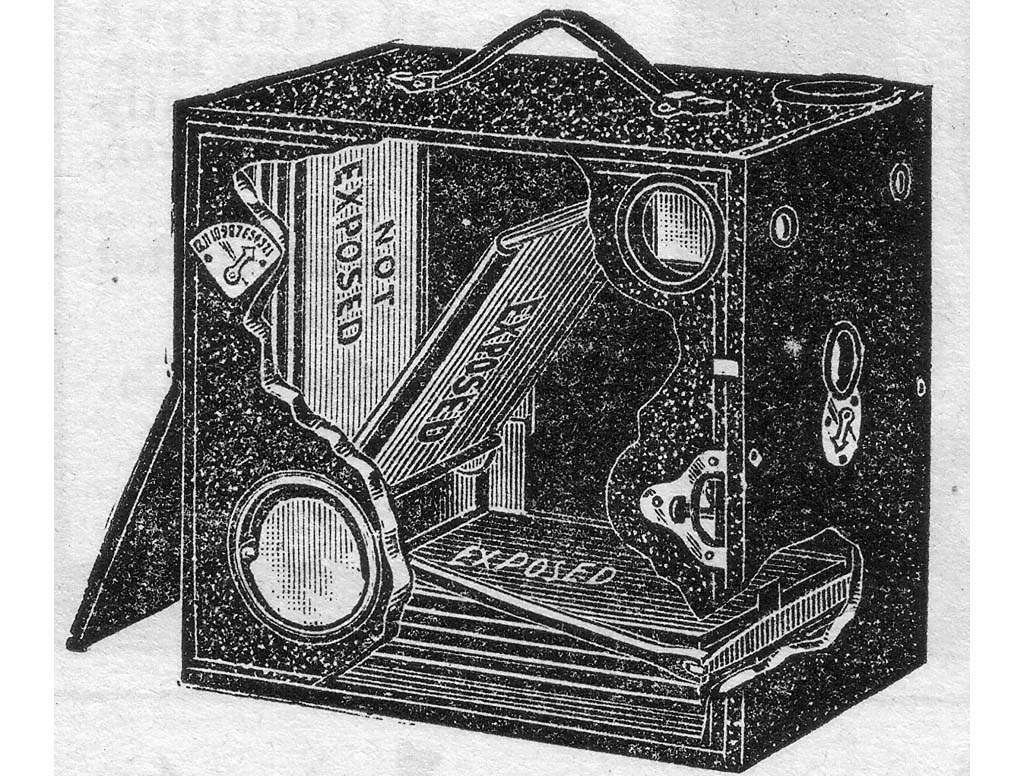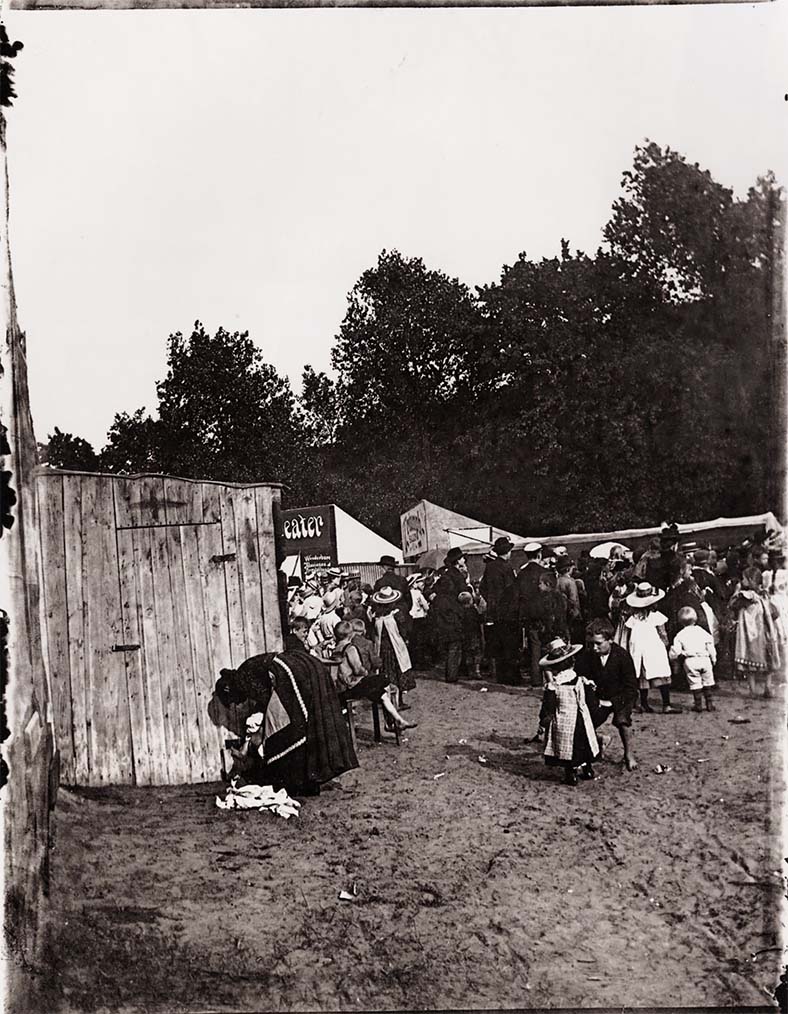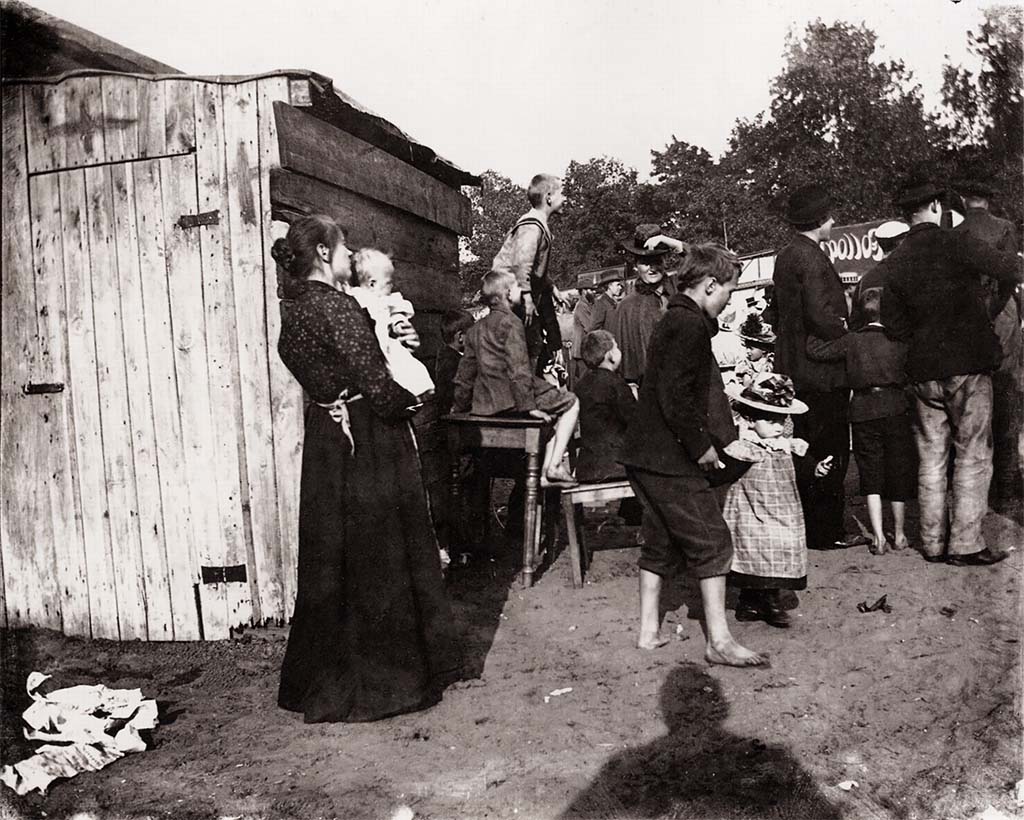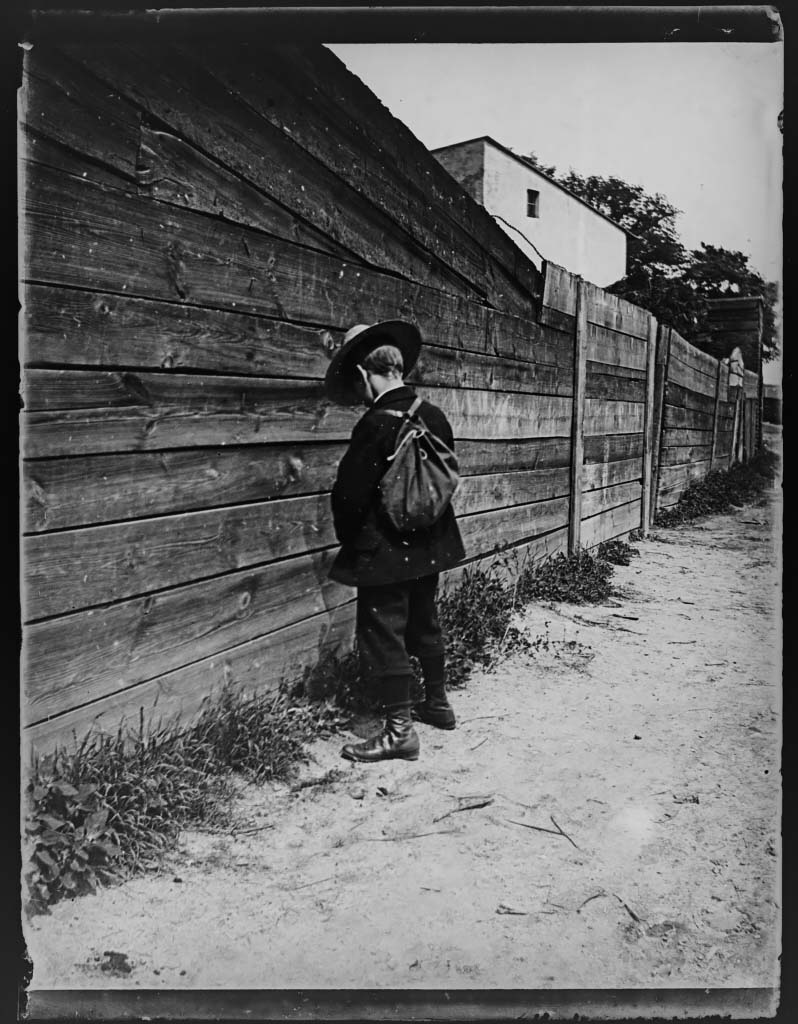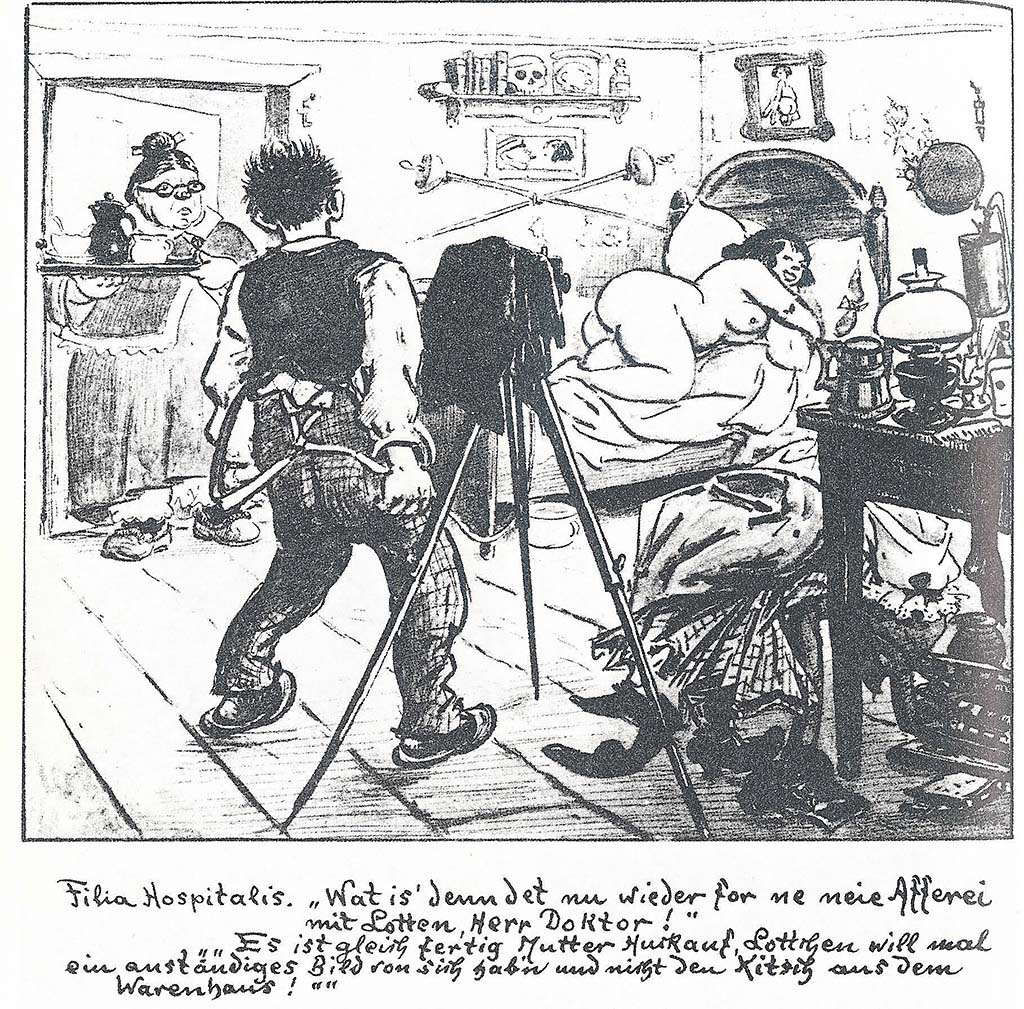Heinrich Rudolf Zille, born 10 January in 1858 in Radenburg near Dresden in
Germany, is famous, though unless you live in Berlin, you may not have heard of
him. An artist, lithographer, cartoonist and lecturer, his street photography is
among early examples but was almost unknown until rediscovered in the 1960s.
What is noteworthy about them is that they are the work of a man of the
proletariat who photographed fellow Berliners of that demographic. They are
contemporary with the candid photographs that
Paul Martin made on the
London streets using a hidden camera.
Both arrived at photography through their work as part of the vast army of
people illustrating the popular picture press, Martin as an engraver, and Zille as
a lithographer, a profession suggested to him by Max Libermann.
© Paul Martin (c.1890)/ Courtesy Luminous Lint
(c.1890) Blind beggar at the cattle market. Platinum print 18 x 22.8
cm Victoria and Albert Museum
Both started photographing well before
Lewis Hine (1874 - 1940) and about
the same time as
Jacob Riis (1849 - 1914), also a newspaper employee and at
one time the owner of the News who had started his well-known project
How
the Other Half Lives in the tenements of New York with an eighteen-page
article in the Christmas 1889 edition of
Scribner's Magazine.
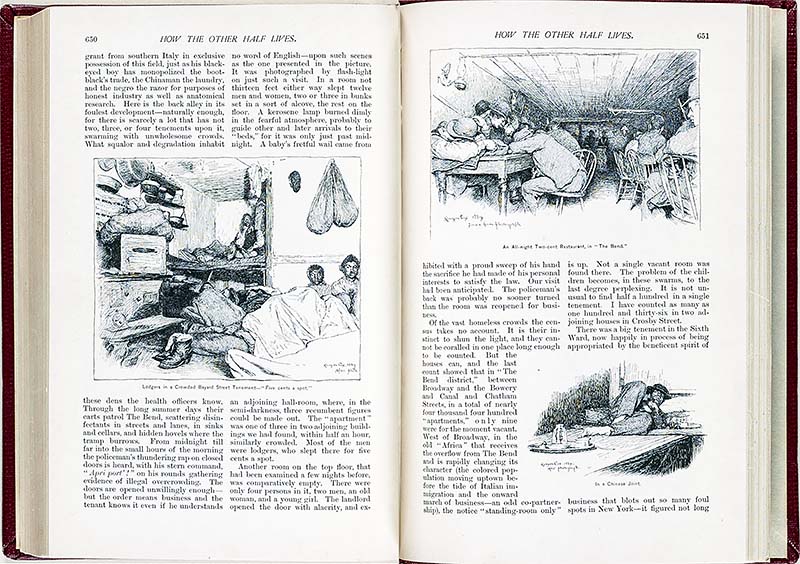
'How the Other Half Lives: Studies among the Tenements,' wood engravings from photographs, Scribner's Magazine, December 1889. Library of Congress
Zille was celebrated in his own lifetime (he died in 1929) as a cartoonist and
graphic artist and with the post-war division of Berlin and start of the Cold War
his reputation was claimed by the communist state. He lay claim to the
working-class subjects of the poorest districts of north and east Berlin, as
'Mein Milljöh' (My Milieu), justifiable because of his origins in a modest
provincial family of Saxony who, to escape his watchmaker father's debts, had
migrated to the city in 1867 just as did millions of others to live in the then
densest concentration of tenements in Europe amongst which they found a
basement near the Silesian train station. At nine years old, and with his father
back in jail, he earned a living delivering newspapers and running messages,
quickly familiar with 'Dark' Berlin of the rapidly developing civil servants and
industrial city.
Ignoring his father's advice to be come a butcher, in the 1870s he used his skill
in drawing to train and got work at the Photographische Gesellschaft,
specialists in popular reproductions of artwork, and began exhibiting his own
work in the form of drawings and prints in 1901. Zille was encouraged exhibit in
the Berlin Secession recently established in 1898 by
Max Liebermann
and sculptor friends
August Gaul and
August Kraus, both of whom were
members and there he exhibited alongside others who so vividly depicted the
proletariat,
Hans Baluschek and
Käthe Kollwitz, and illustrators of urban life
like
Theophile Steinlen and
Henri de Toulouse-Lautrec. Unlike Kollwitz,
Zille's imagery rattles with the same ironic laughter as did his poverty-stricken
urban subjects in confronting their sorry lot.
Zille followed the Photographische company in 1892 to new quarters
in increasingly bourgeoise Charlottenburg in NW Berlin,
the population of which tripled between 1890 and 1920.
He established his young family there, where he spent the rest of his life,
climbing socially above his original 'milieu' but, following his sacking from the
Photographische Gesellschaft and his subsequent career as an illustrator, he
continued to cultivate an identity as a proletarian artist, albeit one that drew on
his own hard experience and genuine empathy.
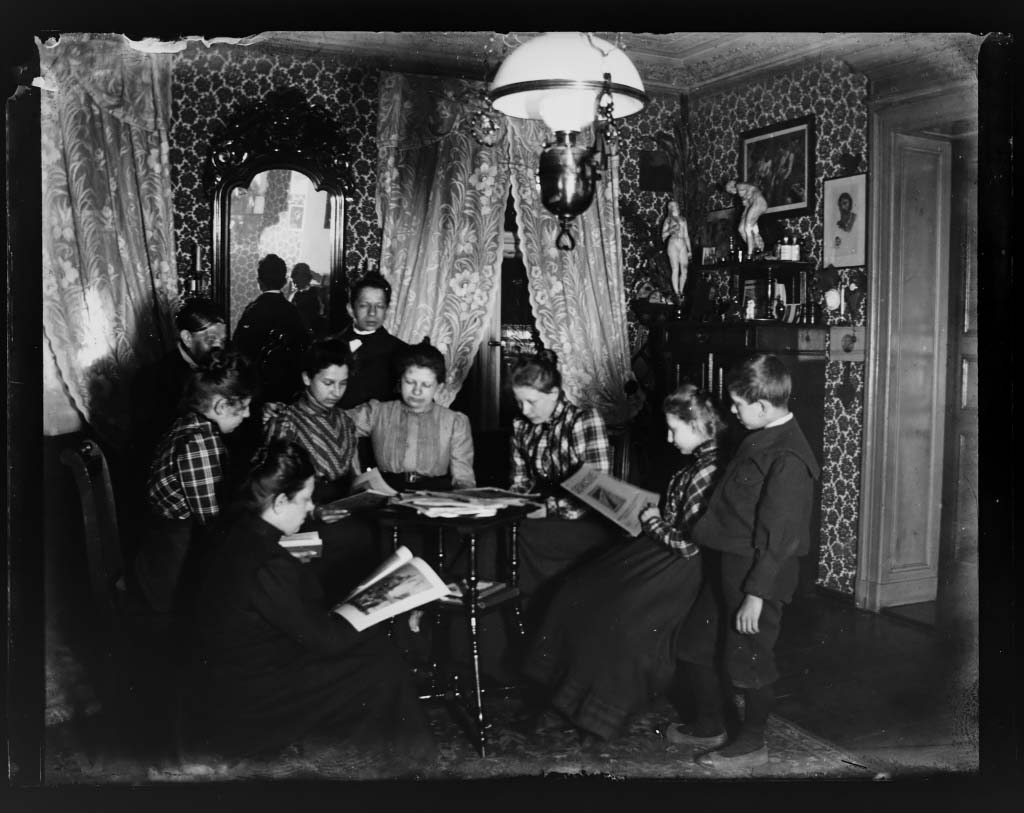
Heinrich Zille (after 1893) Zille family in their Charlottenburg apartment

Heinrich Zille; Friedrich Luft (1967) Mein Photo-Milljöh : 100 x Alt-Berlin. Publ. Hannover : Fackeltr ger-Verl. Schmidt-Küster, 1967
Interestingly, in 2013, Dresden photographer
Detlef Zille (not related to
Heinrich) published a
thesis that fiercely disputes that Heinrich ever was a
photographer, against the view expressed in Berlin Theater critic
Friedrich
Luft's publication of the first 120 images discovered, in his Mein Photo-Milljöh,
and artist
Matthias Flügge's
Das dicke Zillebuch,curation of two large Zille
exhibitions in 1996 and 2008, and a catalog raisonn of the prints.
He dismisses daughter Margarete K hler-Zille's memories of her father taking
pictures, attacks the credentials and motives of authors of books on the Zille
photo archive, finds inadequate written evidence, implies that the discovery of
the negatives in the apartment of the artist's step-grand-son was fabricated for
financial gain, and obliquely insinuates that some may have been 'flea-market
finds.'
Is this a case of stubborn denialism? As
Aaron Scharf has shown in his 1968
Art and Photography, with others since corroborating, there is a common
resistance amongst painters, and their biographers and descendants, to admit
a resort to photography, or at least keep it a 'trade secret' - witness the
apoplectic tantrums of certain art historians around
David Hockney's Secret
Knowledge: Rediscovering the lost techniques of the Old Masters. His
reputation as Heinrich "The Brush" Zille was too good to endanger with any hint
that he might resort to mechanical aids!
The proof of course was always there in the photographs themselves, the
cache of over four hundred glass negatives and approximately one hundred and
twenty original prints discovered in his estate in 1966. They are dated 1882 -
1907, when Heinrich Zille would have learned to operate copy cameras and
darkroom at the Photographische Gesellschaft, and had opportunity to process
his negatives and the contact prints which survive.
In 1987 the Berlinische Galerie succeeded in acquiring Zille's entire
photographic estate, 152 original prints and more than twice as many glass
negatives, and all can be freely viewed there online, which I have done in
preparing this post. The Galerie commissioned photographers Michael Schmidt
and Manfred Paul to make new prints in 1993/94, boosting the entire Heinrich
Zille collection to 628 records, though it includes 85 photographs that they
identify as by an 'unknown photographer' but which Zille kept.
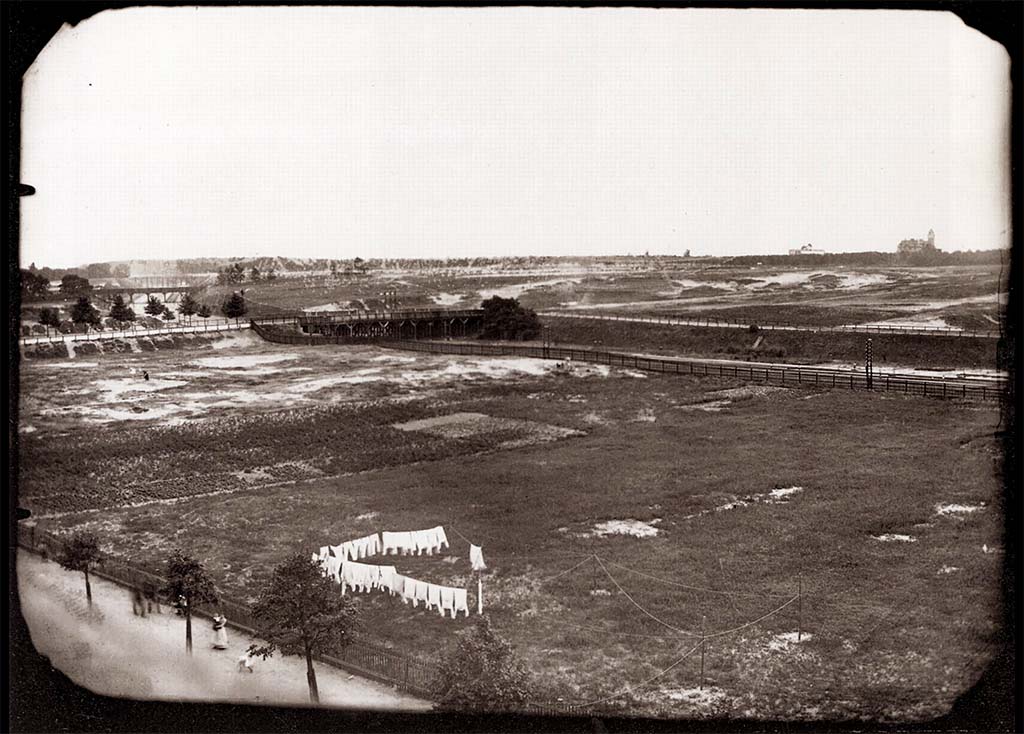
Heinrich Zille (after 1893) view from the window of the Charlottenburg apartment to the southwest (Zeno photography)
The subject matter is clearly linked to Zille's interests. A view from the
apartment window shows an open vista across a sandy plain toward the
Ringbahn (railway) with the Knobelsdorff Bridge to the southwest as early as
1893.
Four years later, and we are with him as he photographs back toward his
apartment (below the arrow)
The women in the foreground of his photograph are labouring to push a
converted pram through the sand and tracks left by others doing the same;
carting sticks from the distant Spandauer forest to use for heating and cooking
in their tenement, or to sell.
Map of Charlottenburg in 1900, showing the West End location of the Zille
apartment from which they had a view to the east.
Like the washing strung in the open space below his window, these women and
their labour presents a subject that clearly fascinated Zille, one depicted in his
cartoons and prints.
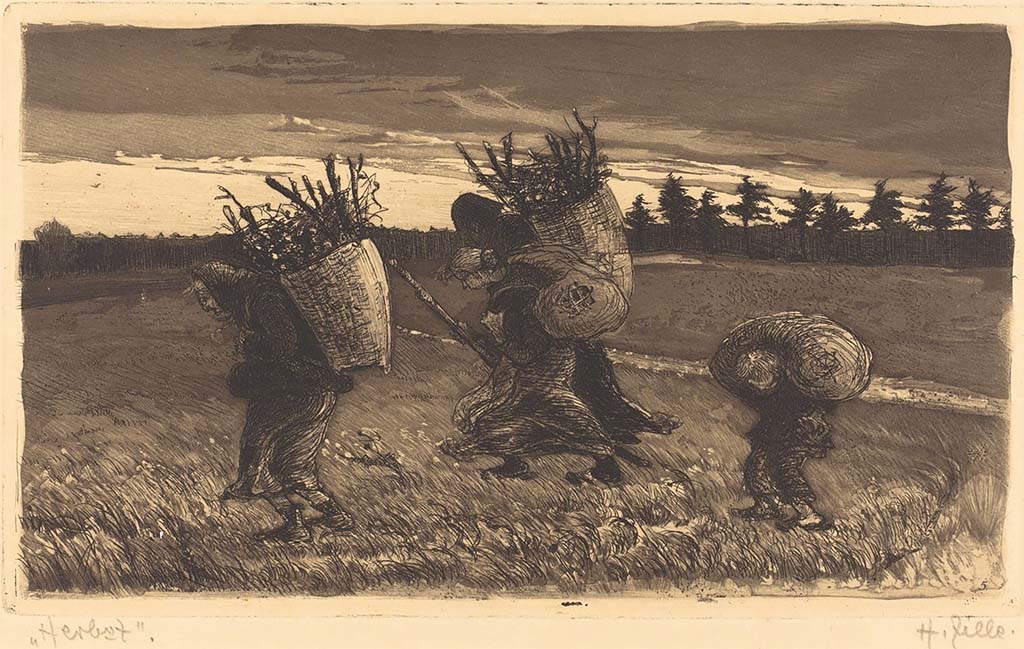
Heinrich Zille (1895) Autumn. Original etching (etching and aquatint in brown black on yellowish vellum. 13.8 x 23 cm
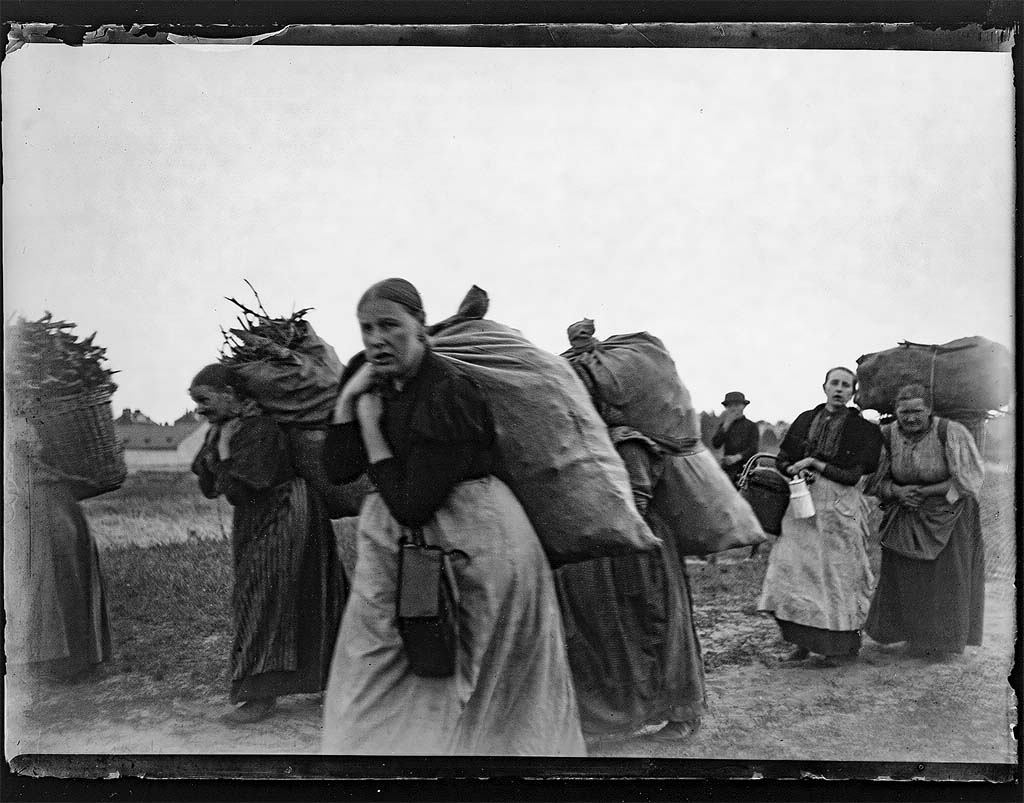
Heinrich Zille (after 1893) Brushwood collectors approaching Westend (image flipped horizontally for comparison with etching)
Would it matter if someone else took this picture to his instructions? Hardly;
isn't the cinema director who never uses the camera still accepted as the
author of their films? Aside from the thumbprints embedded in their rather
hastily developed emulsion, that it was he who was behind the camera there is
other evidence fixed in this sequence of rapidly exposed glass plates.
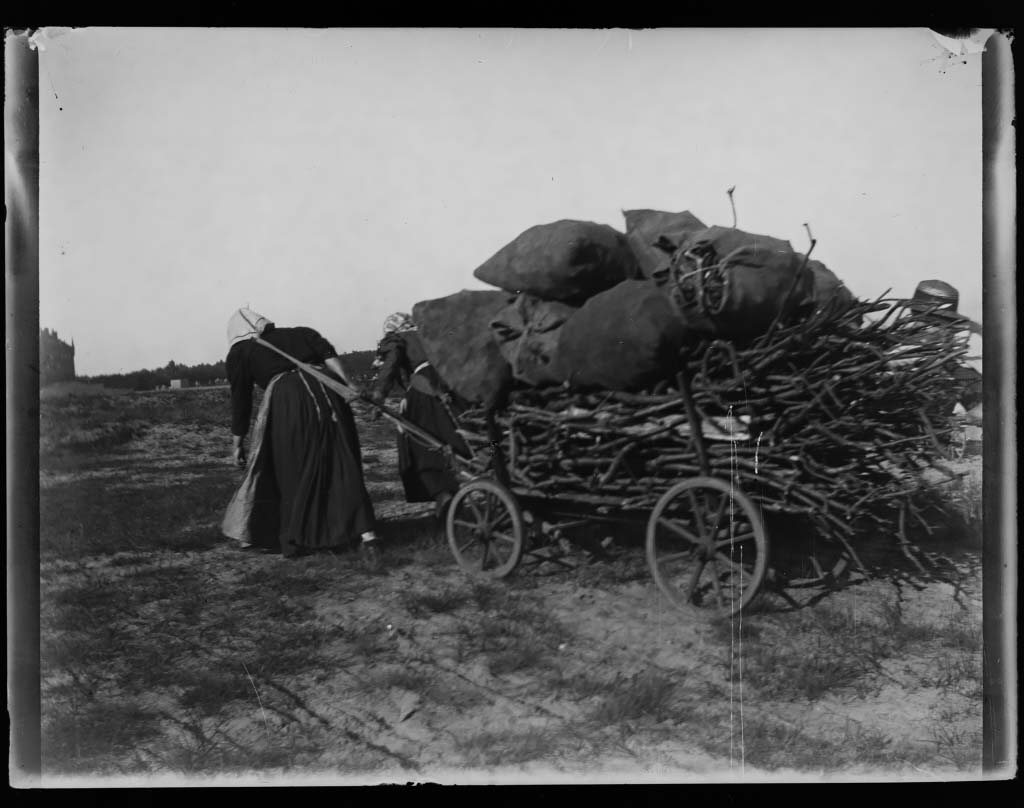
Heinrich Zille (after 1893) Two women with kindling-filled cart
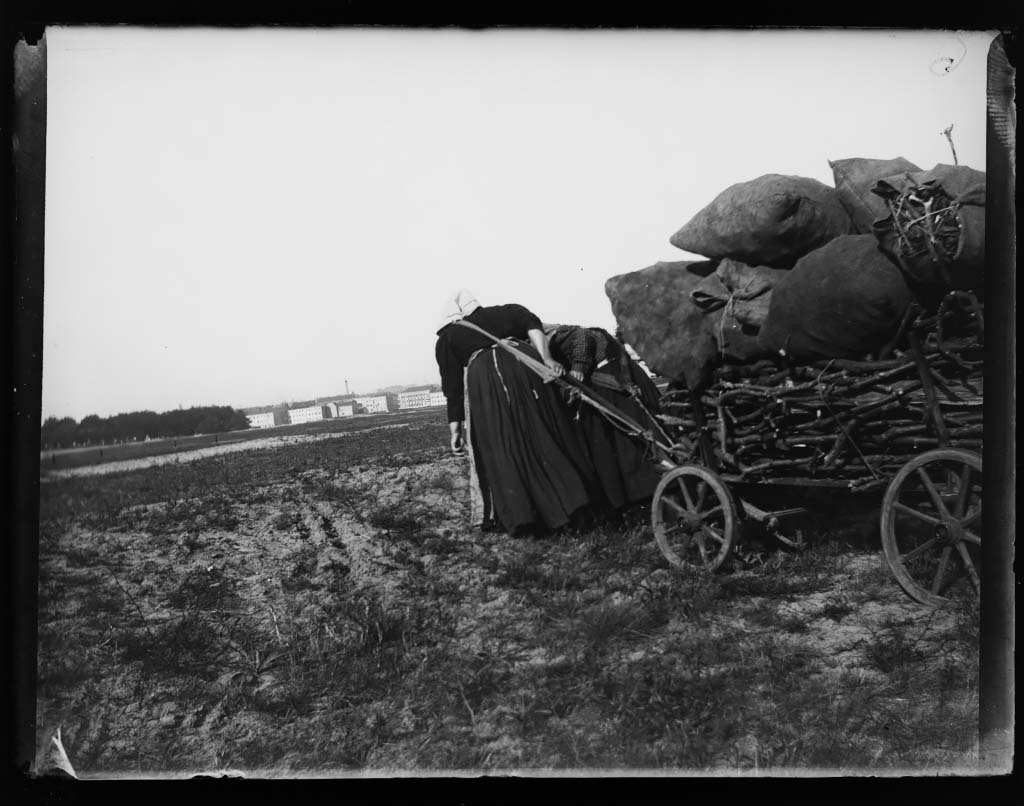
Heinrich Zille (after 1893) Two women with kindling-filled cart
Here's Zille drinking with a gravel-pit watchman. Clearly this is made with a
bulb release with the camera resting on a convenient flat surface for the long
exposure with light entering the doorway which is reflected as a square in the
glass of the bottles; it's not lit with flash powder and its evident that there is not
another photographer present since the other man looks in the direction of
Zille.
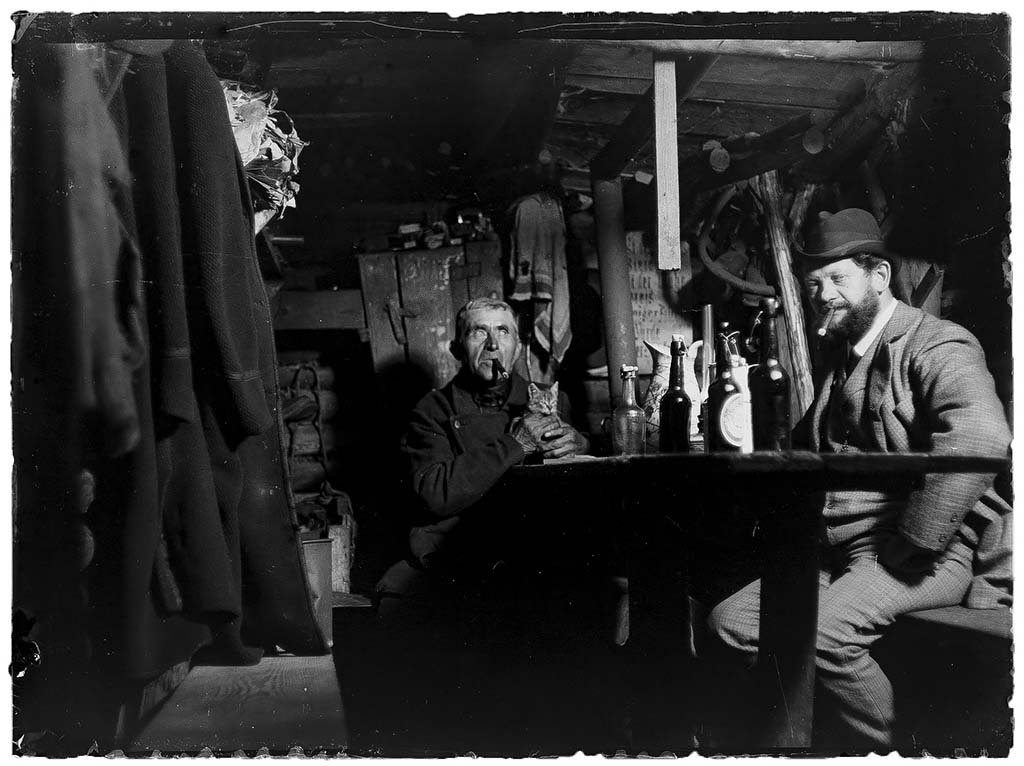
Heinrich Zille (c.1900) Gravel pit keeper in his hut with Zille (right)
That characteristic fedora and that bulky Falstaffian figure reappears in the final
shot of the brush-hauling sequence; as a shadow, head tilted downward.
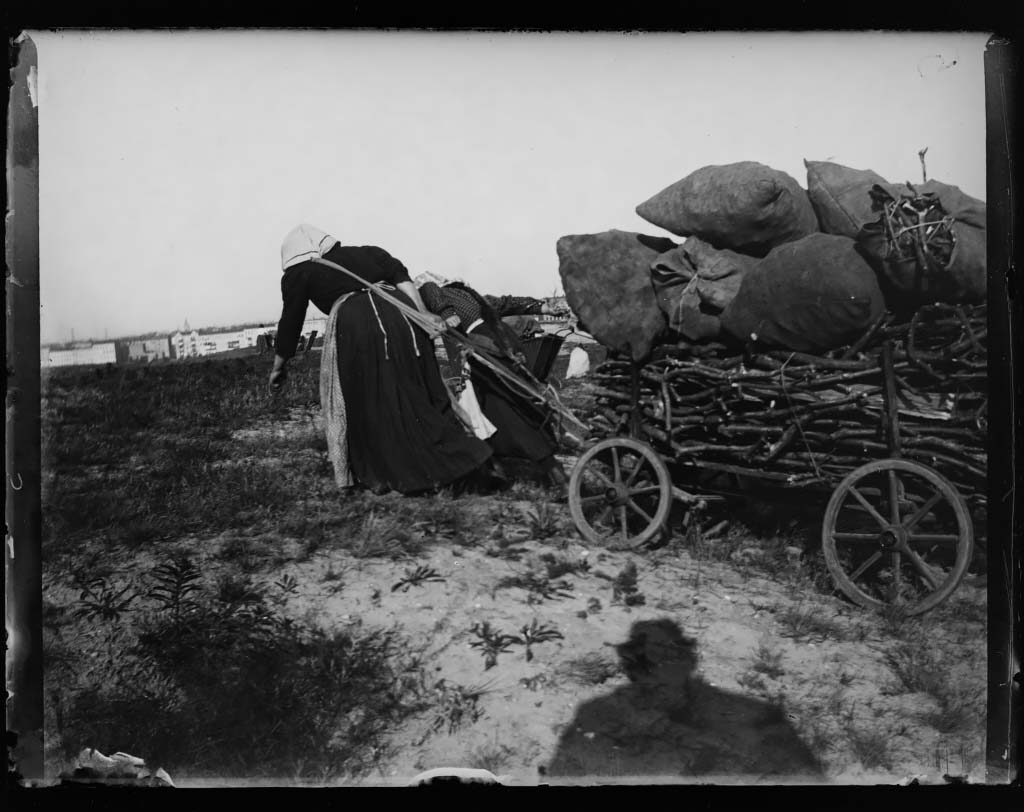
Heinrich Zille (after 1893) Two women with kindling-filled cart
The box camera he is evidently using, is of a common type that Zille like any
middle-class Berliner could easily afford to buy for himself. The horizon crosses
the hips of the two harnessed figures, so we know the camera is being held at
waist level.
It's a falling-plate camera, of the American Conley 'Quick Shot' type, with a
magazine of twelve 3 1/4 4 inch glass plates in the same format and
dimensions used by Zille, and which could be used to quite rapidly expose a
series of shots.
While it had simple little 'brilliant' viewfinders for either landscape or portrait
orientation (note their position on the box) the camera body had to be turned to
vertical in order to flip down the exposed plate in its holder that was hinged
across the short side, for each exposure. That may account for the left-tilting
slanting horizon common to so many of Zille's pictures, where he has brought
the camera back not quite to horizontal after advancing plates, since it was
hard to orient with the primitive viewfinder. If he forgot to turn the knob for a
fresh plate, this double-exposure is what would result; in this case the building
facade and cathedral steeples being superimposed.
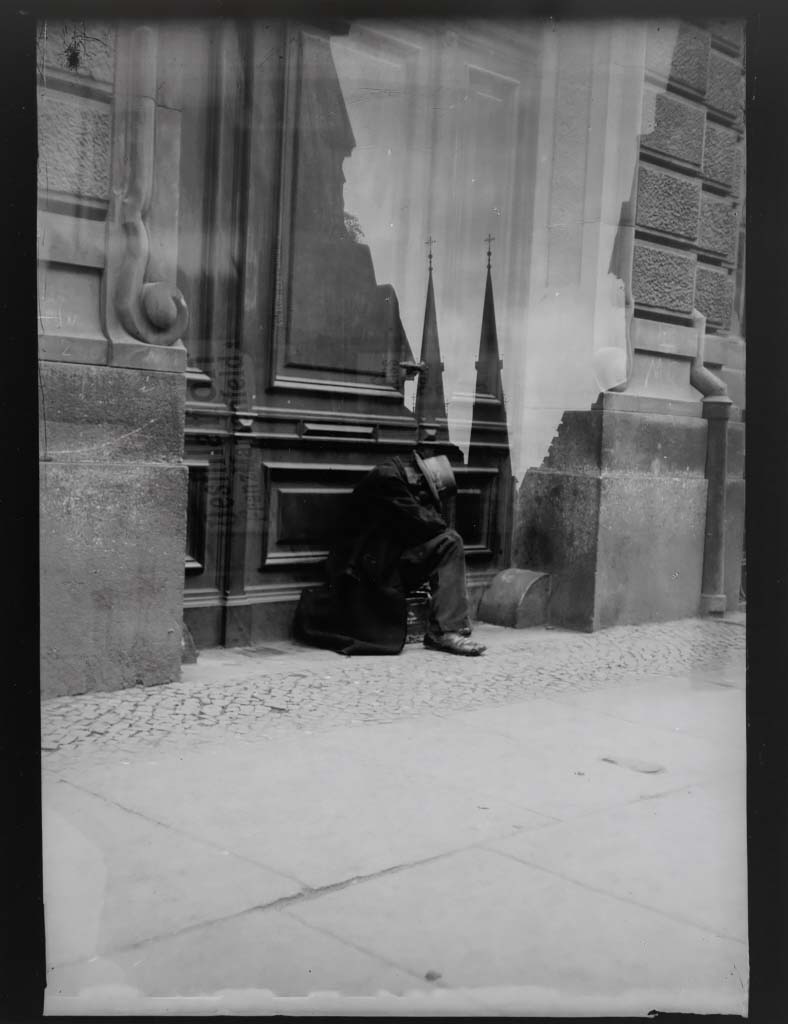
Heinrich Zille (c.1900) Exhausted man crouching in the doorway of a house.
We see Zille closing in on his subject as he walks, as here in a pair of shots
showing a young woman first holding a baby as it urinates on the ground behind
the crowd enjoying a sideshow (realist humour he repeats in an image of his
son pissing against a fence).
He shows her then as she stands, babe in arms, enjoying the entertainment.
And there is that bulky male shadow again, this time hatless. Has he stopped
out of curiosity about her, and she perhaps, intrigued by 'Original Australians'
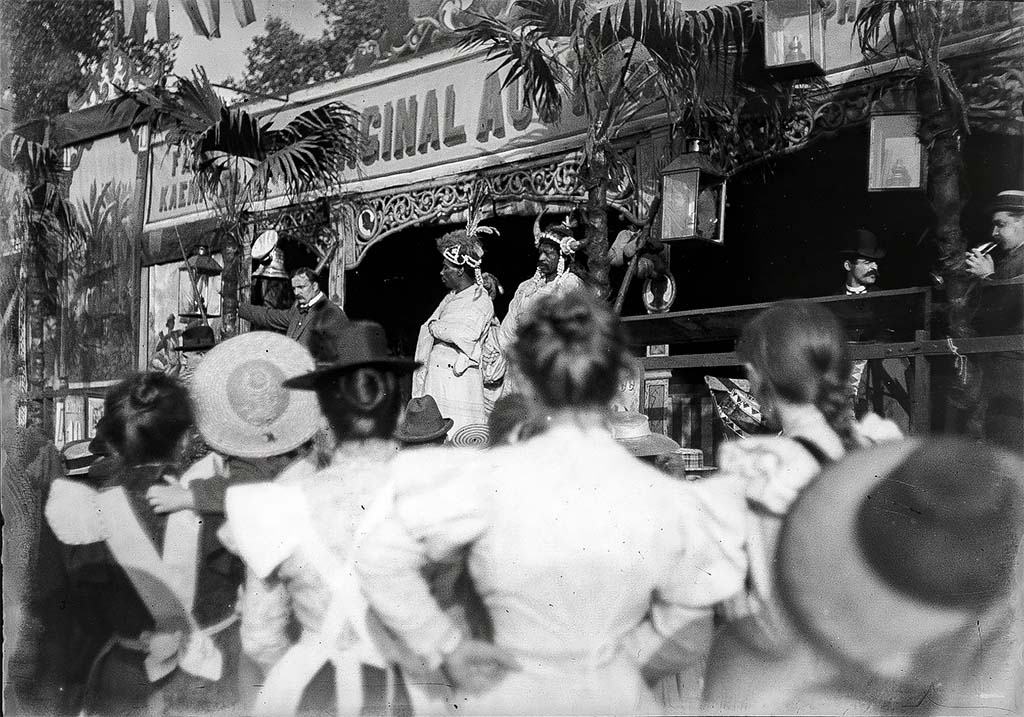
Heinrich Zille (after 1893) Carnival booth showing supposed 'Original Australians'
Also consistent in the majority of the Zille street photographs is that they were
made with a fixed-focus lens, which results in his selected motif often being
out-of-focus, as here, where the floral dress and the basket weave of the
middle ground is sharp but the stripes of the pregnant woman's skirt in the
foreground is out-of-focus. The lively boys are blurred due to the longer
exposure time needed to compensate for the desired depth-of-field.
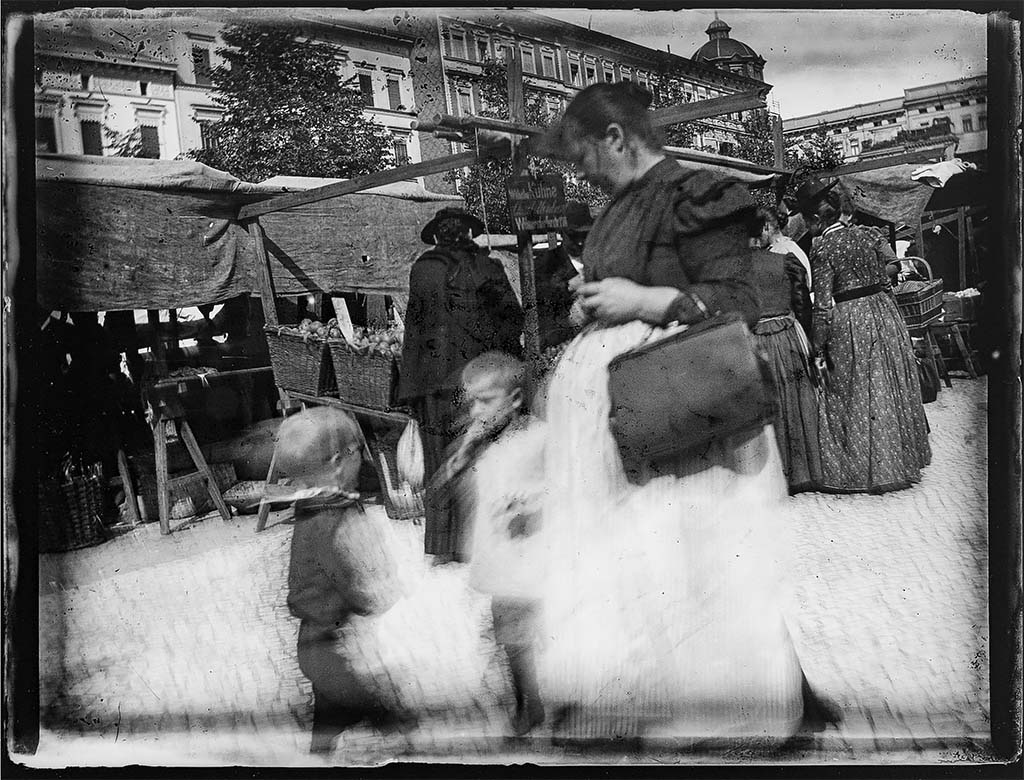
Heinrich Zille (1898) Market, Friedrich-Karl-Platz, northwest side.
There are distinct parallels between the locations of the photographs and the
places his artworks depict, even those so obscure, unattractive and of interest
to no other photographer, such as this rubbish dump which he has transplanted
close to Knobelsdorff Bridge in the drawing.
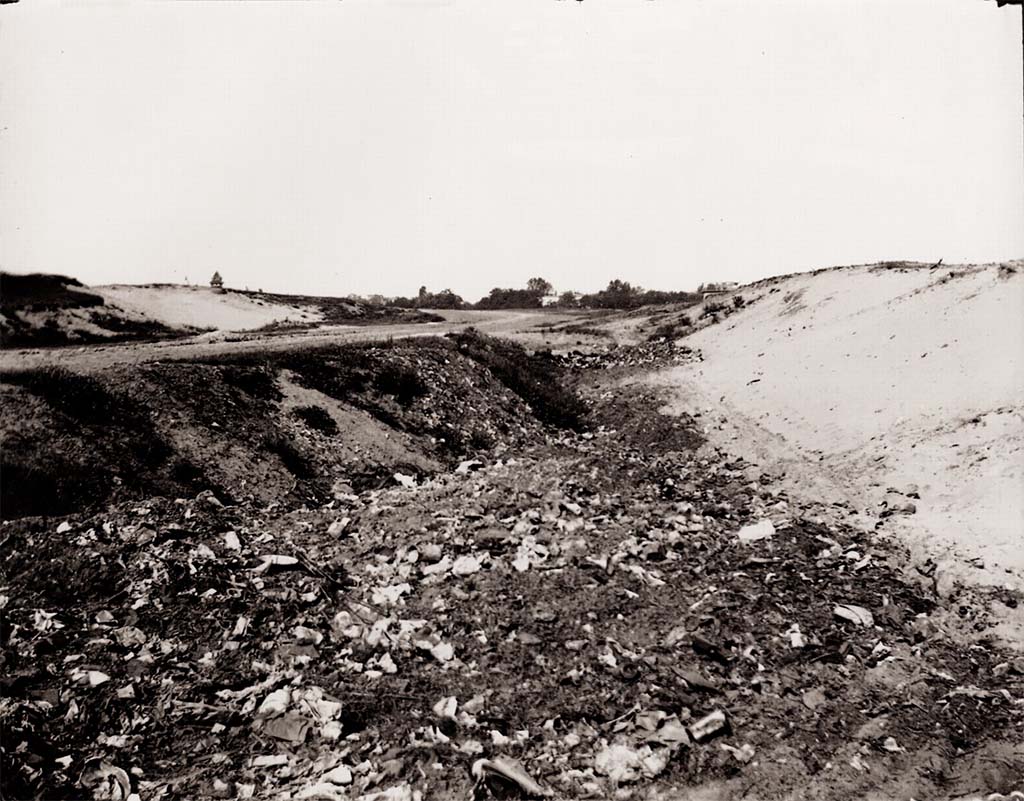
Heinrich Zille (after 1893) Garbage dump in Charlottenburg
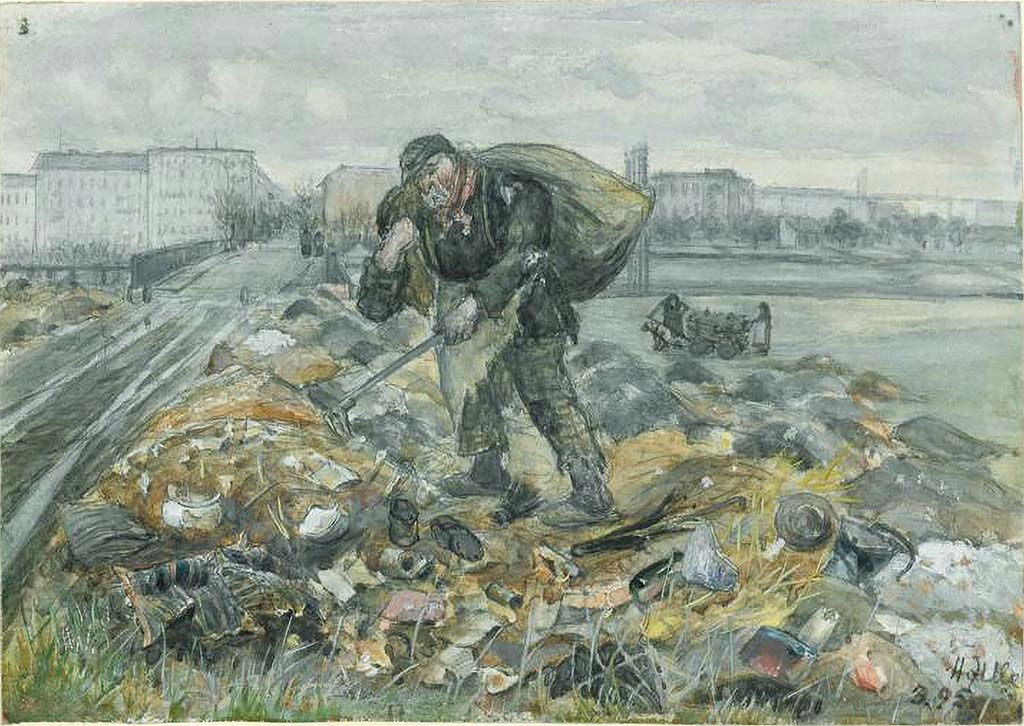
Heinrich Zille (1895) Muellsammler (Garbage Collector). Drawing and watercolour
Furthermore, there is the attention paid to children in so many of these
photographs, a subject matter that is a major percentage of Zille's oeuvre.

Heinrich Zille (after 1893) children on the Knobelsdorffbrücke, view towards Charlottenburg
Here again, the same back focus too and the stains and unevenness of hasty
processing, and the same format, just cropped square to cut out a stray finger
over the lens.
Zille is a cartoonist, draughtsman, printmaker and painter first and foremost.
Technically, the quality of his street photographs is handicapped by his
amateur equipment and his undervaluing them, but there are amongst his
archive some made with a larger camera and again, the subject matter is
children, this time posing more formally for him.
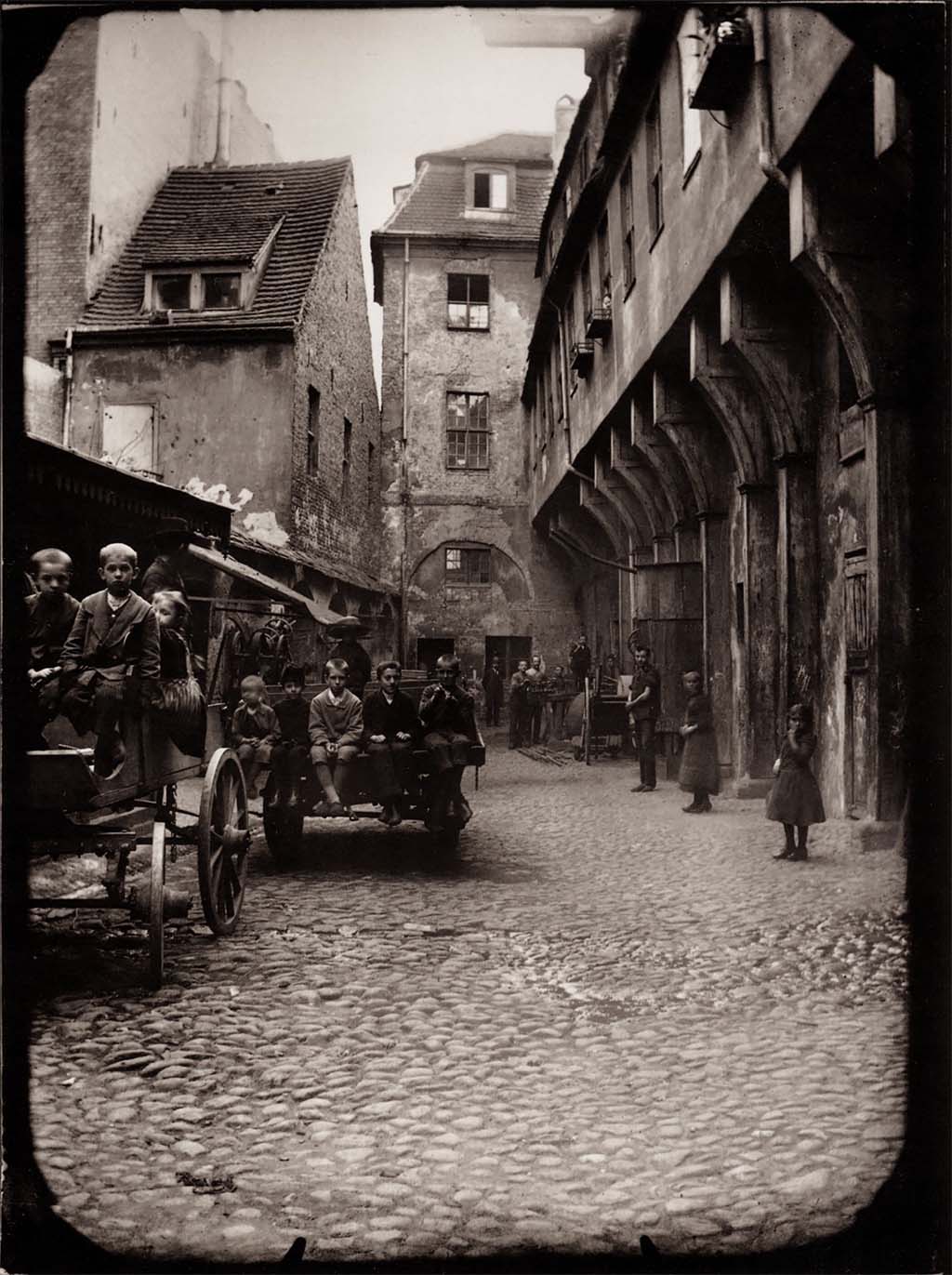
Heinrich Zille (c.1896) First courtyard in Krögel with posing children, view from the second courtyard
It is also a location of high interest to him; one of the poorest streets in Berlin in
which craft families shared the single building built over a channel into the
Spree, from which their water was drawn. Note the correct verticals of the
buildings in the photograph and the high vanishing point just left of the head of
the most distant man, signifying the use of a tripod needed for the larger
camera and negative, at 8″ x 10″ (26.7 x 20 cm). It is such images, given their
inconsistency with the majority, that one might just argue were taken by a
professional for Zille, but that would give his photography secret away. I can
find just one of his cartoons, one from his last years, in which a camera plays a
role.
...which may be interpreted...Landlady: "What's going on with Lotte, Doctor!"
[Medical student lodger]: "It's almost ready, Mother Hurkauff, your Little Lottie
wants to have an authentic picture and not the kitsch from the department
store."
in his 2008 "Heinrich Zille and the politics of caricature in
Germany 1903-1929" (Etudes Balkaniques) provides the most incisive English
language summation of Zille and his context. Of the artist's late career he
notes;
"His contribution to the special issue of Simplicissimus on Berlin in 1926
was a bar scene that could have been from before the war, in contrast to
those of the journal's principal illustrators, each of whom represented a
different aspect of the harsh, brash, contemporary city. Karl Arnold, who
had begun a series of 'Berlin pictures' in the journal in 1921, included Zille
himself in the collection of Berlin types that he presented here. In this
vignette a reluctant looking artist is proferred a box of cigars by a
corpulent, complacent bourgeois and his smart female companion: 'Do take
a fresh Havana Master Zille. You've given us so much pleasure with your
tarts and paupers.' Zille cited this ironic portrayal in a regretful note on the
impact of his work, reproduced in 'Für Alle!. 'I was ashamed, because it was
true.' "
Zille's art, however authentic, can be seen now, against that of fellow exhibitors
in 1912 and 1917
Max Beckmann, Franz Heckendorf, Ferdinand Hodler,
Vincent van Gogh, Ernst Barlach, Erich Heckel, Oskar Kokoschka, Max
Liebermann, Willy Jaeckel, Dora Hitz, and
Edvard Munch, or
George Grosz
later, as complicit in a nostalgie de la boue, the guts of the gutter played for
guttural guffaws. Indeed his erotica indulges in the sordid pleasures of
'slumming it,' with some of his images of naked children verging on child porn.
As a sociological record these photographs serve higher, and lasting, purpose.
One would ignore their contents, style and technique to try to prove they were
not made by Heinrich Zille; that is a folly much more problematic than to accept
that they
are of his eye.
James McArdle
Artist and recovering academic enlightened by the metaphoric potential of focal effects and the differences between human and camera vision.
Academia
